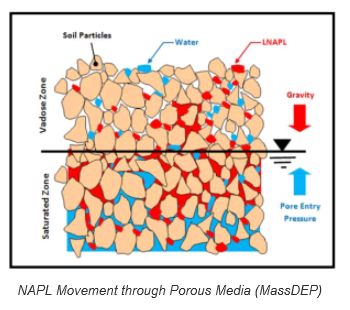- within Media, Telecoms, IT, Entertainment and Tax topic(s)
MassDEP recently published its final guidance for Light Nonaqueous Phase Liquids (LNAPL). The document provides guidance on investigating and assessing the presence and migration of LNAPL at disposal sites regulated under the Massachusetts Contingency Plan (MCP).

When MassDEP amended the MCP regulations back in 2014, it included some changes to address petroleum sites with LNAPL. Previously, sites with 1/2" or more of LNAPL present were stuck at a temporary solution. Frequently the 1/2" Upper Contamination Limit (UCL) was the only thing preventing closure for sites with no significant risk. The goal of the amendments is to allow licensed site professionals (LSPs) to make a site-specific determination whether conditions pose any significant risk. LSPs may now use multiple lines of evidence to determine whether the LNAPL is stable or non-stable and whether it has micro-scale mobility. The amendments update the assessment and source control rules to reflect MassDEP's view of the most current science regarding LNAPL, integrating principles of multi-phase flow in porous media into the assessment and remediation of LNAPL.
Revisions to the way the MCP treats LNAPL have been in the works for over a decade. The LSP Association published white papers on the topic in 2005 and 2008. This new guidance from MassDEP outlines the behavior and science of LNAPL in the subsurface and describes the tools and metrics that can be used to evaluate LNAPL-contaminated sites. This is good news for manufactured gas plants and other sites where residual LNAPL was the only contaminant standing in the way of site closure.
To view Foley Hoag's Law and the Environment Blog please click here
The content of this article is intended to provide a general guide to the subject matter. Specialist advice should be sought about your specific circumstances.


